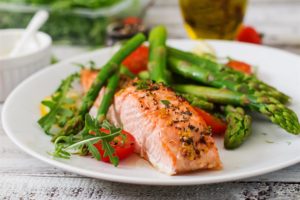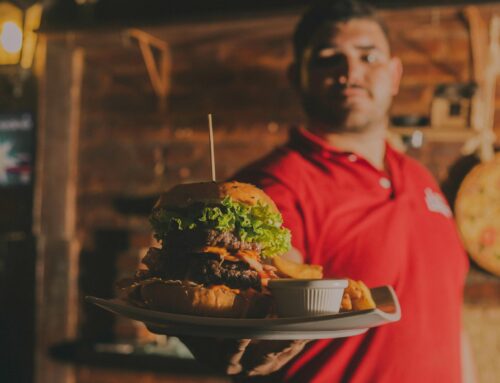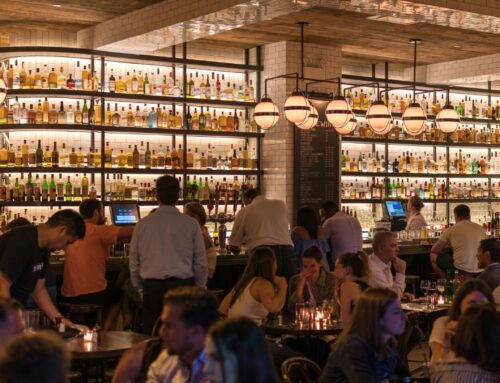 According to the Centers for Disease Control and Prevention, 1 in 6 Americans get sick from food poisoning each year—a sobering statistic for those who own and work in restaurants.1
According to the Centers for Disease Control and Prevention, 1 in 6 Americans get sick from food poisoning each year—a sobering statistic for those who own and work in restaurants.1
Although restaurant insurance is an effective way to protect your business from food-related and other lawsuits from customers, the best protection is prevention. Before we discuss basic food safety, let’s explore some challenges facing restaurant businesses and highlight the most common sources for problems to occur.
Factors That Affect Food Safety
Food safety is affected by several factors. Food can become contaminated when environmental factors like the weather pattern in a particular area change. For example, an area that receives increased moisture during the growing season can cause food to spoil prematurely. Food safety can also be compromised when food supply and production change, such as when a higher volume of a certain food must be imported.
A growing number of toxins and bacteria are becoming resistant to antibiotics, which is also a factor that poses a significant threat to food safety. On top of that, the detection of outbreaks of CDC foodborne illness across multiple states has yet to be fully effective.
Causes of Food Contamination
Food can become easily contaminated via physical, chemical, or biological means. Physical contamination occurs when foreign bodies enter food. Chemical contamination can occur when pesticides, cleaning chemicals, or polluted soil or water has come into contact with food. Biological contamination is that which occurs via viruses, bacteria, parasites, or mold.
Physical
Typically visible to the naked eye, physical contaminants can come from many sources and threaten your business. The brick particles, glass shards, or tile fragments from buildings and equipment are all potentially dangerous if they enter food. Food packaging can also contaminate food should the string, staples, elastic bands, and other securing methods be ingested.
Pests and insects can also introduce physical contaminants to food in the form of waste and hair, which itself can contain harmful bacteria that can pass into food.
Finally, physical contamination can also originate from those who handle food. Pieces of clothing and jewelry can enter food, as can hair, fingernails, and even the tops of pens and candy wrappers.
Chemical
Food can become contaminated by chemicals when they enter via the fungicides or pesticides farmers use to treat crops. However, they can also enter food via poultry and bovine feed additives. Similarly, if plants or animals were unknowingly exposed to contamination in the soil or water, this, too, can result in contamination.
When the wrong chemicals are chosen for cleaning, or when a cleaning product is not used as directed, contaminated food can be the result. The same is true when the wrong chemicals are used to clean the equipment that processes food, the area where food is prepared, and the containers used to store food.
Chemical contamination via metals can occur with unlined cans which store acidic foods, causing a reaction that causes the food to absorb metals. Contamination can also occur via some kitchen equipment, such as cookers and fridges which typically contain cadmium. As well, any galvanized surface will likely contain zinc, which can also contaminate foods that come in contact with it.
Biological
In general, biological contamination occurs when germs enter food. This can occur at any point in the harvesting, shipping, storage, and preparation of food. Pathogenic bacteria are the cause of food poisoning, and spoilage of food occurs when parasites, mold spores, and similar contaminants cause rotting and decomposition.
The intestines of animals which are raised for food contain bacteria which, although they are healthy for the animal, can cause serious illness in the human body. One example of this is E. coli. Although the parts which contain these bacteria are discarded, they can sometimes come in contact with meat.
The same is true of dairy products, which can also become contaminated in this way.
Fresh produce and fish have also been known to become contaminated before they reach the restaurant. When they have come into contact with water contaminated by the waste from farm animals, other animals, and birds via tainted irrigation water or field soil, produce can become infected. Fish that swim in waters contaminated by bacteria can also become contaminated before being harvested for food.
Ways to Prevent Food Contamination
Despite all of the ways in which food can become contaminated, the contamination risk can be completely eliminated when everything is treated properly.
Stopping Cross-Contamination
Cross-contamination occurs when bacteria is transferred to one food from another. This happens when the same surfaces and utensils are used for raw and cooked meat, for example. The best way to prevent cross-contamination is to keep raw food and items used to prepare it away from all other foods.
The same is true of where food is rinsed. Produce should never be rinsed in the same sink as meat or eggs, so having a dedicated sink for potentially-harmful foods is best.
Make Sure It’s Cooked
The internal temperature of cooked food is absolutely critical for reducing contamination.
One food safety tip recommends that food should be exposed to a temperature of at least 70 degrees Celsius for a minimum of two minutes. However, this temperature and exposure must occur all the way through the food to ensure that all bacteria are killed. Otherwise, it will be ingested and cause an illness (which may or may not be covered by your restaurant business insurance).
Storage, Defrosting, Reheating, and Hot Holding
No food that is ready to be prepared should be stored or displayed for more than two hours at room temperature. The same is true of cooling or defrosting foods.
When reheating food, the secret is to ensure the temperature is sufficient to kill the toxins produced by bacteria. Food should be reheated by other means than using a microwave, as this can cause only certain areas of food to be reheated.
During the time that food is being served, it’s important that the counter or container holding the food is over 63 degrees Celsius.
Food Allergies
Food allergies are another way that patrons can become ill from what they eat in your establishment.
Staff should be trained in the proper handling of the allergy requests of patrons and should also be trained in how to prepare allergen-free meals. The tools used to prepare allergen-free food should be designated as such, and not be used to prepare any other food.
Staff should also be aware of the 8 most common food allergies, which are:
- Wheat
- Shellfish
- Eggs
- Peanuts
- Tree nuts
- Soybeans
- Fish
- Milk
Proper Training in Food Handling and Hygiene
In addition to allergies, staff and owners alike should receive formal training in how to safely prepare, handle, cook, and serve food.
The best way to accomplish this is via courses offered by a recognized organization such as The National Restaurant Association, which offers food safety guidelines and classes covering specific areas within a restaurant. For example, its Food Handler program covers proper cleaning and sanitation but also includes a time and temperature component, as well as education on allergens, cross-contamination, and personal hygiene.
Strategical Risk Management
Every food establishment faces the same risks in terms of customers experiencing foodborne illness. Even when you have obtained the highest quality food safety training, it’s always a good idea to reduce your risks even further by getting the right restaurant liability insurance for your establishment.
General liability insurance will protect your business from claims of libel, property damage, and negligence. Property insurance will cover losses incurred as the result of damage to the business via equipment, theft, and food contamination. Protection from losses incurred via a claim of professional error can be had by including errors and omissions coverage, where a restaurant owner’s policy offers coverage for all risks.
Make Sure You Have the Right Restaurant Business Insurance
The best way to get adequate coverage for all of the risks you face as a restaurant owner is to do it correctly the first time, which can be a challenge for new business owners.
When you want to ensure the safe handling, preparation, and service of the food at your establishment, your first best step is to contact an experienced insurance agency. Tabak Insurance Agency has over two decades of experience in the food service and hospitality industries and can customize affordable coverage just for you. Contact us to learn more.
Sources:




